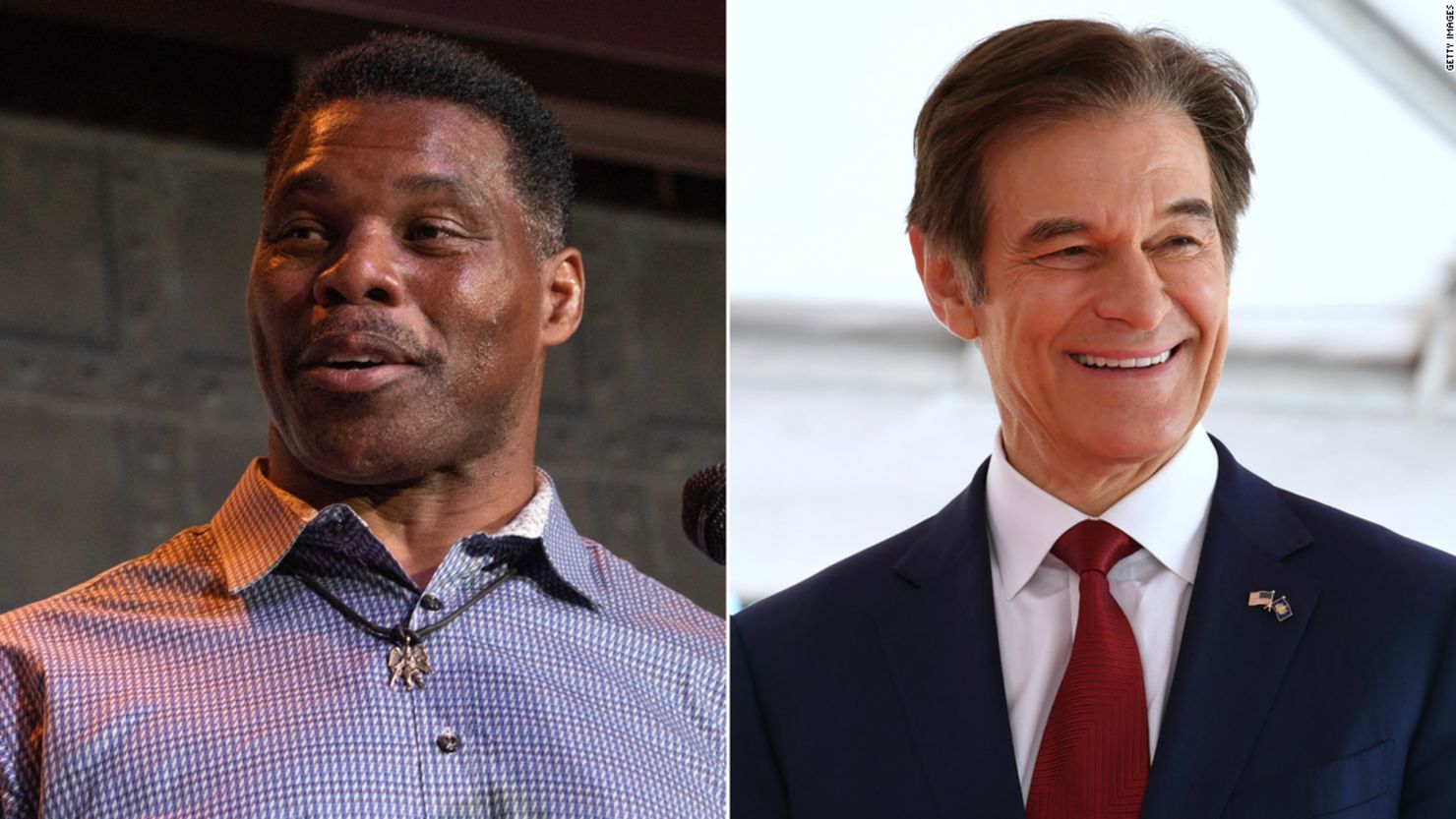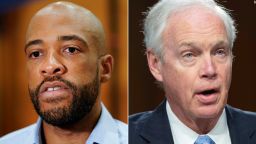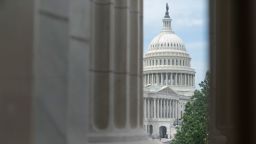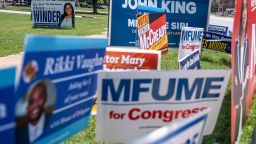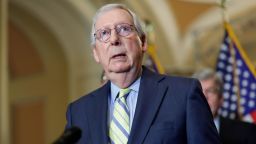It’s been a tough summer for Republicans intent on taking back the Senate in November, with candidates struggling to raise money, break out from their primaries and failing to take advantage of a beneficial political environment.
But GOP committees and outside groups, many of which have watched the summer malaise with concern, are increasing their planned spending in races across the country, hoping that closing the spending gap Democrats currently enjoy could help Republicans buck the summer doldrums. Democratic operatives and strategists believe that spending will help Republicans close most polling gaps in key states, ending what has been a sunnier-than-expected summer for Democratic Senate candidates and bringing races to where they will eventually end up: Remarkably close.
The latest burst in spending comes from One Nation, the public policy arm of the Senate Leadership Fund super PAC, which plans to pour more than $10 million in television, radio and digital ads in Arizona, Georgia, Nevada and Wisconsin, operatives tell CNN. The money comes on top of what the group is already spending in each state. The ads, which look to boost Republican Senate candidates in each of those states, will begin running this week and run through early September.
“Democrats spent the summer living a lie, pretending to be innocent bystanders in slick television ads while they worked with Joe Biden to trash our economy and raise our taxes,” said Steven Law, head of the Senate Leadership Fund.
The spending, however, comes after a summer that has laid bare a set of difficult issues for Republican candidates.
In Pennsylvania, Republican Mehmet Oz has struggled to raise money and squandered months during which Democrat John Fetterman was off the campaign trial. In Georgia, a series of shaky campaign appearances by Republican Herschel Walker raised concerns among top members of his party – and created questions about his ability to take on Democratic Sen. Raphael Warnock. And in Ohio, a state few Republicans believed they would be forced to spend money in, Democratic Rep. Tim Ryan has dwarfed Republican J.D. Vance’s fundraising as he paints the conservative author as an Ohio outsider.
Bruising primaries also forced some of the GOP candidates to spend millions earlier in the cycle, making it difficult to keep the spending going at the outset of the general election. And those same Republican primaries forced candidates to move to the right, complicating each candidate’s ability to pivot back to the middle as the general election begins.
Even still, Republican operatives hope that the helpful environment will mean even late spending will be enough to put GOP candidates over the edge.
“There was an onslaught of spending from the Democrats that we knew was coming. All of their spending happens earlier than ours. We just had to compensate, “said a Republican operative working on Senate campaigns. “From now until election day, we just need to spend enough to be on parity or close to parity.”
There is also a sense among Democratic operatives and campaign officials that the summer of rosier headlines and surprising public polling will end soon, and the party is preparing for races from Georgia to Pennsylvania to Arizona to tighten in the coming weeks and months. Democrats have benefited from dominating the airwaves over the last few months, the operatives argued, but as Republican money floods in, races where polls show Democrats with sizable leads will tighten to dead heats.
“When the spending disparity tightens – and it is going to tighten in their favor – the races will look much more like what they will look on election day,” said a top Democratic campaign aide.
Democrats’ strong summer
Even with the difficult national environment they face – voters traditionally want to punish the party in power two years after the presidency changes hands and polls have shown some skepticism around Democratic leadership in Washington – the party took advantage of several advantages over the summer.
Few of their top races had competitive primaries, allowing their nominees to stockpile cash and focus on the general election — something that could not be said for Republicans.
Those messy Republican primaries also provided Democrats with scores of attack points, many of which were used over the summer and are sure to be the center point of attacks in the closing months of the midterms.
The party has also dominated spending on television, radio and digital over the summer.
In Arizona, Sen. Mark Kelly has put his sizable campaign war chest to work, spending well around $16 million on television and radio ads between the start of May and to late August. Blake Masters, the Republican who was locked in a contentious Senate primary, only spent a fraction of that during the same amount of time.
The news got worse for Masters when the Senate Leadership Fund said it was canceling $8 million in planned spending supporting him, a spokesperson for the group told CNN Friday. The cancellations will mean SLF will not air ads in Arizona for much of September.
The decision is a blow to Masters and signal growing skepticism in his ability to defeat Kelly.
In Pennsylvania, where Republican concerns are most pressing, Democrat John Fetterman has spent more than $8 million over the same time, compared to Oz, who until recently was largely off the air since spending millions in the closing days of his contentious primary.
And in New Hampshire, Republicans have been forced to endure a late primary – voters won’t select their nominees until September 13 – that has allowed incumbent Democrat Sen. Maggie Hassan to stockpile money while several Republican candidates struggle to break out of the field.
As sunny as some of these races have been for Democrats, most operatives are certain that the coming months will be trying.
“Senate Republicans are plagued with a roster of deeply flawed candidates running on unpopular policy positions, but the DSCC is taking nothing for granted and we are operating under the assumption that each of our battleground races will be extremely close,” said David Bergstein, top spokesperson at the Democratic Senatorial Campaign Committee.
Republican money is coming in
Republicans have been aggressive in pushing back against the idea that their candidates wasted the summer and start the fall in a worrisome position.
While several Republican operatives acknowledged the tough summer, they added that they are confident that once Republicans emerge from their primaries and voters begin to pay attention to the forthcoming midterm elections, the races for Senate will simply become a choice between the party in power and the challengers.
And when that choice kicks in, they argue, Republican money will be streaming in – most notably from the Senate Leadership Fund.
To date, the Republican super PAC has reserved nearly $180 million worth of ads in Alaska, Arizona, Georgia, Ohio, Nevada, North Carolina, Pennsylvania and Wisconsin.
“We’re going to make sure voters know who’s to blame for their pain,” said Law, head of the super PAC. “And the only way to stop it is to elect a Republican Senate majority this fall.”
The National Republican Senatorial Committee has also pushed back against allegations that they have not been involved in key Senate races until recently, noting that they have spent more than $42 million on ad spending so far, with a bulk of that money going to North Carolina, Arizona and Georgia.
“Our strategy from the beginning of the cycle was to spend early to keep our candidates in the fight until the fall when the big spending from the outside groups picks up,” said Chris Hartline, spokesman for the committee. “As we’ve seen in the past, you can’t win elections in May or June but you can lose them.”
CORRECTION: An earlier version of this story misspelled Sen. Raphael Warnock’s name.

